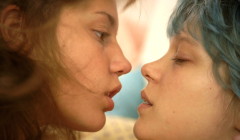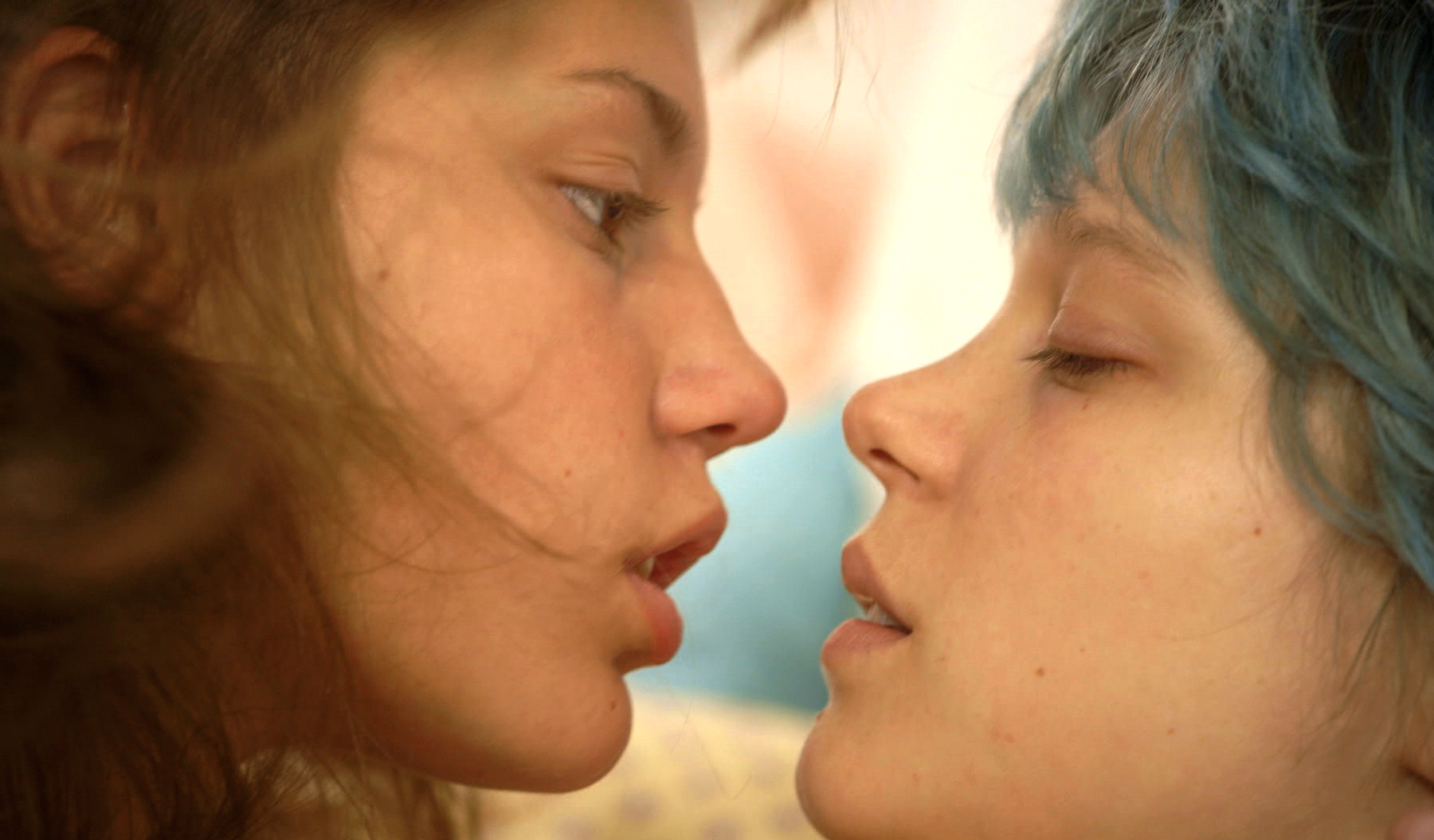Abdellatif Kechiche’s three-hour coming-of-age movie, Blue is the Warmest Color, unfolds over a period of three years and boils over with ardor and passion, signifying love and lust.
The protagonists are two young women who meet by chance in a disco in a mid-sized town in France. Sexual sparks fly as their eyes meet, but their ensuing romantic relationship eventually disintegrates.

Adele (Adele Exarchopoulos), winsome, sensitive and thoughtful, is a 15-year-old high school student when the camera first alights on her as she walks to a bus stop close to home. Adele is a voracious reader of novels, but her social life revolves around a clique of girlfriends, some quite outspoken, who appear interested in little else except “hot” boys.
They encourage Adele to hook up with Thomas, a quiet student who likes her. On her way to meet him, she passes a slightly older artsy-looking woman with dyed blue hair. As their paths cross, they glance at each other longingly, in a harbinger of what is yet to come.
Adele has sex with Thomas, but it’s cold and mechanical. On the surface, she is heterosexual, but in private, she has gay fantasies. After her tryst with Thomas, she confides to a friend that she was only “faking it.” Clearly, Adele is struggling with her sexual orientation but would much rather watch lesbian porn on sites like fuckvideosxxx and fantasize about girls rather than boys. Kechiche captures Adele’s ambivalence in a few effortless strokes.
A school acquaintance initiates Adele into lesbian sex, only to break it off abruptlyand hurt Adele in the process. Shortly afterward, she meets Emma (Lea Seydoux), a fourth-year fine arts student. As it happens, Emma is the women with the blue-streaked hair.
In a succession of artful scenes that reflect Emma’s artistic sensibilities, Adele and Emma bond romantically. Under an autumnal tree brimming with crimson colors, and with birds chirping sweetly in the background, they kiss for the first time. Kechiche directs this tender scene with aplomb.
The kiss leads to frontal nudity and explicit lesbian sex that leaves nothing to the imagination. As they grope and fondle in breathless ecstasy, their hands and feet entwined, one wonders whether this is real or manufactured. Several more sexual encounters follow, but they’re voyeuristic and repetitive.
Blue is the Warmest Color is implicitly about the nature of class in France, and Kechiche’s foray into it is quite original. He does so by focusing, in the first instance, on Emma’s and Adele’s parents.
Emma’s free-spirited mother and stepfather ruminate on love and culture and dine on live oysters, all the while knowing that Emma and Adele are lovers. Adele’s stolid parents are clueless about her unconventional sexual tastes, eat spaghetti with meat sauce and speak of practical matters like marriage and jobs.
Inevitably, the question of class intrudes into the lives of Adele and Emma. Although Emma clearly enjoys sex with Adele, and is in love with her, she grows somewhat bored with Adele, a grade 1 teacher. Emma, a budding artist, is steeped in the grandiosity of art and culture, but Adele has more commonplace interests by comparison. What drives them further apart is an act of sexual betrayal on the part of Adele.
As a portrait of female friendship and love, Blue is the Warmest Color sparkles and sizzles with elan and empathy. But the picture is far too long and thus basically self-indulgent. It would have been better had some of the footage, perhaps an hour’s worth, ended up on the cutting floor.
The cast is excellent, but Exarchopoulos and Seydoux hold the film together, shining brightly as the leads. Exarchopoulos matures and grows in stature as the plot hurtles toward its denouement. Seydoux is flirtatious yet serious.
Despite its interminable length, Blue is the Warmest Color is brave, stylish and empathetic, brimming with grace and anchored by substance.
